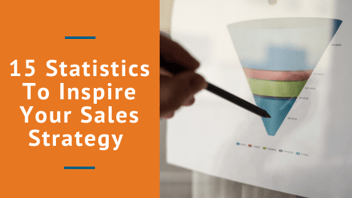
Do you think of sales as a sprint or as a marathon? For today’s successful business, you have to be a marathon runner. The sales model has evolved from the old-fashioned quick close to a more substantive, solution-based strategy. Today’s successful sales model is committed to ongoing customer success, so closing the deal is just step one.
The traditional sales model, track them down and close them, is still being practiced by many sales organizations, but they are losing ground in today’s age of the customer. According to the third annual Salesforce State of Sales report, today’s measure of sales success is customer satisfaction. In fact, the Salesforce report found that today’s sales professionals spend only 34 percent of their time actually selling, and that customer satisfaction ranks higher in their KPIs than meeting quotas (66 percent versus 65 percent). Success metrics are built around customer experience and customer satisfaction analytics, and high-performing sales teams (24 percent of those surveyed) are 1.5 times more likely to base their forecasts on understanding customer data.
Clearly, successful sales are increasingly being driven by customer satisfaction. More research, a deeper engagement, and a better understanding of customer needs are closely aligned with ongoing customer success.
Out with the Old Sales Model ...
For as long as any of us can remember, the sales model has been dictated by the sales funnel. The concept of the sales funnel is to deliver as many prospects as possible at the top of the funnel in order to close as many deals as possible at the bottom of the funnel (i.e., make your quota). The sales funnel is becoming less important as customer expectations have changed and success selling becomes the norm.
The primary goal of sales has always been to acquire new customers at maximum financial value. When applying the sales funnel to the goal, this means placing as many high-value prospects as possible at the top of the funnel in order to yield maximum value when you close. You can do this as a numbers game, pumping as many prospects as possible into the sales process so you will inevitably close more deals. HubSpot research shows that there is clearly a relationship between the number of leads in the pipeline and hitting the quota. Seventy-two percent of companies with fewer than 50 opportunities failed to reach their monthly goals, compared to 15 percent of companies with 51-100 opportunities and 4 percent of companies with 101-200 opportunities.
As the sales team embraces customer success selling, the process becomes driven by quality rather than quantity. By finding more qualified prospects with a greater need for what you are selling, you close higher-value customers that become even more valuable over time.
Of course, prospecting is always a challenge. The traditional method of adding leads to the funnel relied on cold calls, lead qualification, and product demonstrations prior to bringing in prospects. Prospecting has changed thanks to a new breed of better-educated customers. The RAIN Group Center for Sales Research reports that buyers actually want to hear from sales reps to learn about new strategies to improve their business (71 percent) or to solve a specific business problem.
What has changed is that prospects don’t want to be sold; they want to be helped. RAIN also reports that 75 percent of prospects will connect with a sales rep if the product or service addresses their problem. Of course, to get to that discussion, you have to engage and understand the problem in order to present a solution. Customer success selling is more about listening than it is closing.
... In with the Customer Success Sales Model
Adopting a customer success sales model means that closing the deal is not the ending; rather, the first milestone.l. To ensure ongoing customer success, your goal is to become a resource for the client. Customer success selling is collaborative selling. By collaborating with the customer to solve their problem and improve their business, you are cementing a relationship that will increase the value of that customer over time.
It also means collaborating with your internal customer success team. With old-school selling, once you signed the contract, the customer was handed off to customer service for implementation and support. With customer success selling, everyone who interacts with the customer contributes to customer success, so the collaborative process is ongoing. The customer success team will have visibility into every aspect of the customer relationship, which in turn will uncover new sales opportunities as part of ongoing customer engagement.
You have probably heard that customer acquisition costs 5-25 times more than customer retention, but you also are 60-70 percent more likely to upsell or cross-sell an existing customer. That is what customer success selling is all about. Rather than focusing on filling the top of the sales funnel, take a harder look at your existing customer base. Talk to other members of your company’s customer value chain. Chances are that you can uncover more sales opportunities among existing customers.
It’s time to stop thinking of sales as a sprint to your quota and start thinking about running a marathon toward ongoing customer success. The more value you can provide to your customers, the more financial value they will have for you now and into the future.








